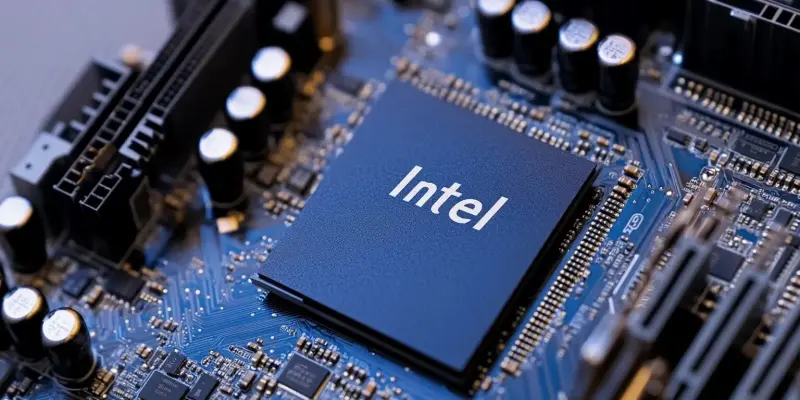Intel recently ignited excitement in the tech community with the announcement of their latest addition to the Battlemage series, the Arc B570 GPU. The introduction of this GPU comes on the heels of the Arc B580, which was introduced back in December 2024. The new Arc B570 is scheduled for release on January 16, 2025, at a price point of $219. This strategically competitive pricing positions it as an attractive option for budget-conscious consumers looking to upgrade their gaming rigs or enhance their computing performance without breaking the bank. Despite its lower cost, the Arc B570 is only about 12% slower than its predecessor, the B580, which is priced at $249. By providing a more affordable alternative, Intel aims to capture a broader segment of the market.
The release of the Arc B570 follows comprehensive testing in the Geekbench OpenCL database, where it achieved a score of 86,716 points. Although this score is lower than the typical scores of 95,000 to 100,000 points for the B580, the Arc B570 still boasts impressive specifications. The GPU is powered by 144 Compute Units, with a boost clock that can reach up to 2.75 GHz. Additionally, it offers 10 GB of GDDR6 memory on a 160-bit bus, all built on the efficient BMG-G21 die that measures 272 mm². These technical attributes signal that the B570, despite its lower performance in benchmarks compared to the B580, holds significant potential for both gaming and professional applications.
Technical Specifications and Performance
A closer examination of the Arc B570 reveals a formidable set of technical specifications that make it a competitive option in the mid-range GPU market. The GPU’s 144 Compute Units are designed to handle intensive computational tasks efficiently, making it suitable for a range of applications from gaming to professional workloads. The 10 GB of GDDR6 memory ensures that the GPU can handle high-resolution textures and large datasets without bottlenecking, providing a seamless user experience across various scenarios. The 160-bit memory bus further enhances this capability, offering faster data transfer rates and reducing latency.
The B570’s 2.75 GHz boost clock is noteworthy, as it surpasses the base clock speed of 2.5 GHz, potentially unlocking higher performance levels in specific conditions. This boost clock can be particularly advantageous in gaming scenarios where higher clock speeds translate to better frame rates and smoother gameplay. Custom AIB (Add-In Board) editions of the B570 are likely to push these performance boundaries even further, providing enthusiasts with enhanced capabilities through improved cooling solutions and optimized power delivery systems. Despite its slightly lower performance compared to the B580, the B570’s specifications make it a compelling choice for users seeking a balance between cost and performance.
Market Position and Consumer Appeal
In the broader context of Intel’s GPU lineup, the Arc B570 occupies a critical position as a more budget-friendly option without compromising significantly on performance. The 12% performance deficit relative to the B580 is offset by a substantial price difference, making the B570 an attractive proposition for consumers looking to maximize their investment. This strategic pricing is likely to appeal to mainstream users who prioritize value-for-money and are less concerned with achieving the absolute highest performance benchmarks. By offering the B570 at $219, Intel is positioning itself competitively against other mid-range GPUs in the market, attracting a diverse customer base.
The Arc B570’s adoption of TSMC’s 5nm process, along with support for PCIe 4.0 x8 interfaces, underlines Intel’s commitment to leveraging cutting-edge manufacturing technologies and industry standards. These features contribute to the GPU’s efficiency and compatibility with modern hardware setups, ensuring a future-proof investment for consumers. Furthermore, the B570’s power connectors and core configurations, including its RT (Ray Tracing) and XMX (AI Acceleration) units, showcase a well-rounded design that caters to both gaming and content creation needs. Intel’s strategy of providing scalable options within its GPU lineup is evident in the B570’s design, offering a blend of performance, efficiency, and affordability that resonates with a wide audience.
Anticipated Impact and Future Prospects
Intel recently sparked a buzz among tech enthusiasts by announcing the latest addition to its Battlemage series, the Arc B570 GPU. This new GPU follows the earlier release of the Arc B580 in December 2024 and is set to hit the market on January 16, 2025, with a price tag of $219. The budget-friendly pricing makes it an appealing choice for consumers looking to upgrade their gaming setups or improve computing performance without spending too much. Though cheaper, the Arc B570 is only around 12% less powerful than the B580, which costs $249. By offering this affordable alternative, Intel aims to attract a wider audience.
The Arc B570 has undergone rigorous testing in the Geekbench OpenCL database, achieving a score of 86,716 points. While this falls short of the B580’s usual scores of 95,000 to 100,000 points, the Arc B570 still features robust specs. It includes 144 Compute Units and a boost clock up to 2.75 GHz. Also, it comes with 10 GB of GDDR6 memory on a 160-bit bus, built on the BMG-G21 die measuring 272 mm². These specs indicate that despite lower benchmark scores, the B570 holds substantial promise for gaming and professional use.

